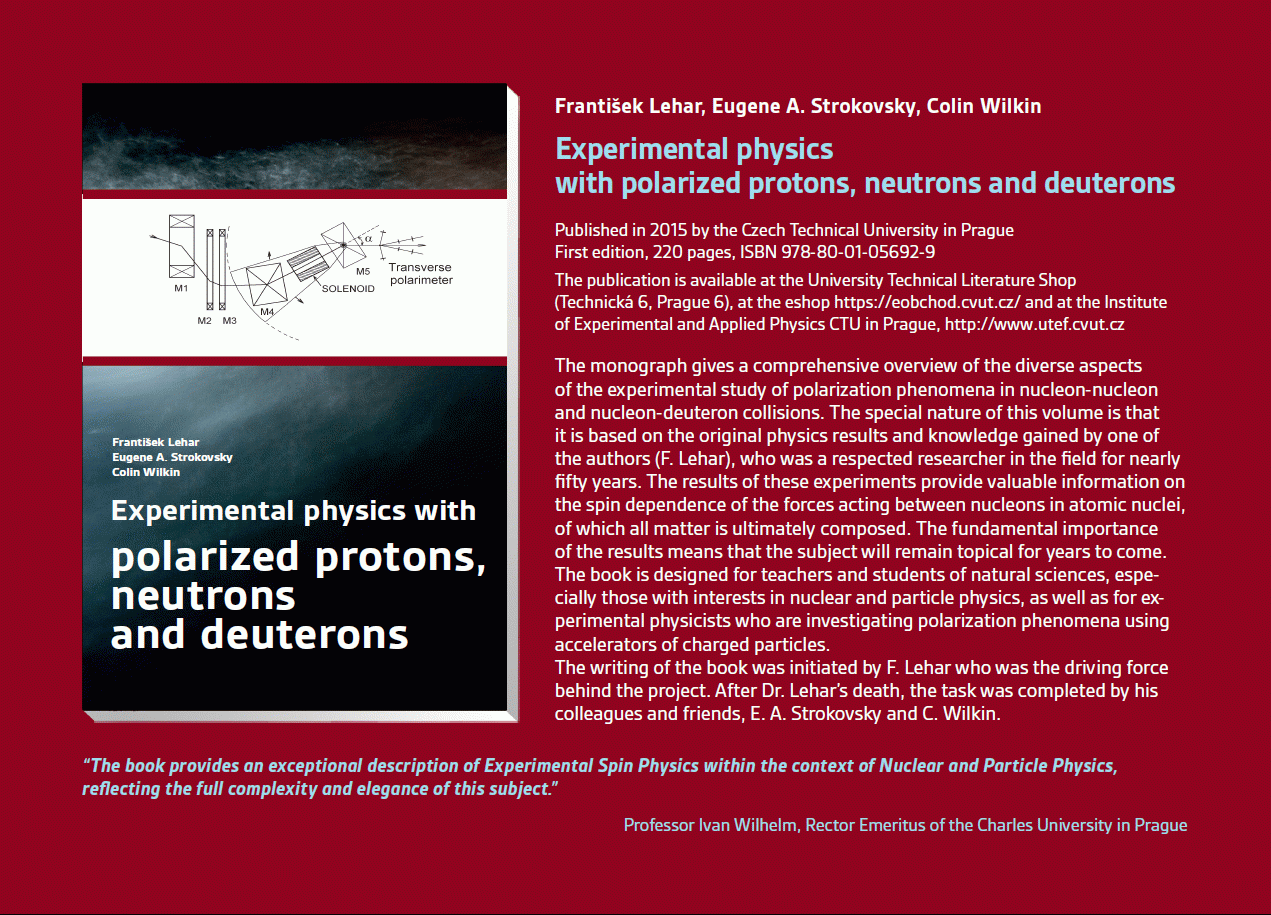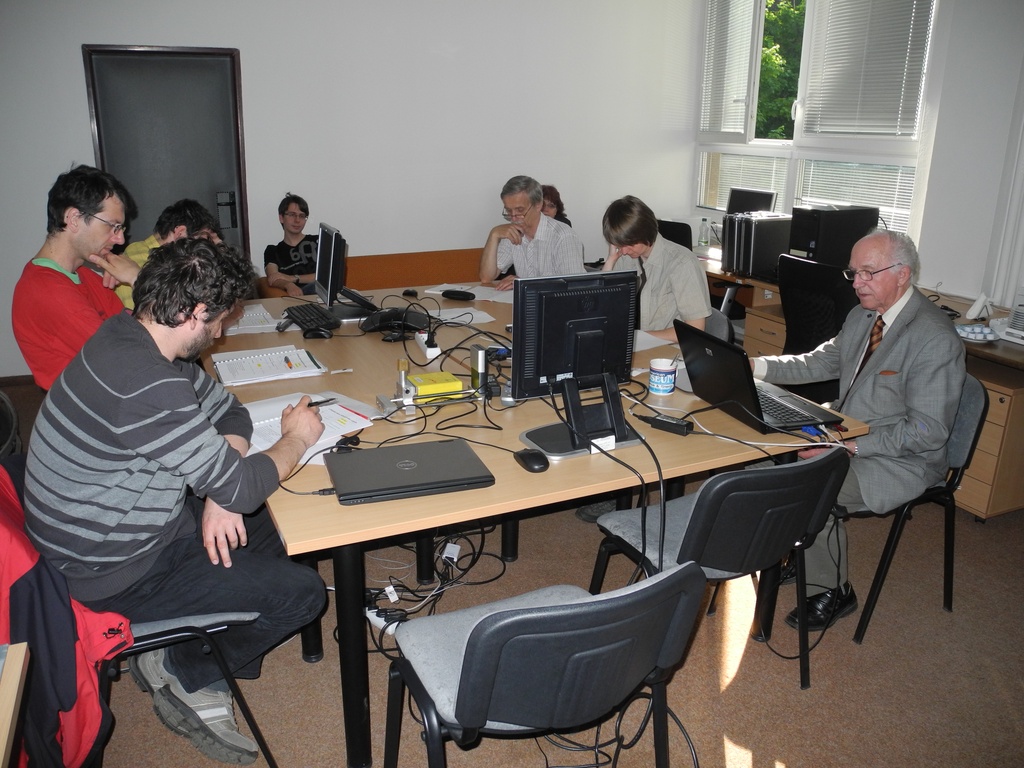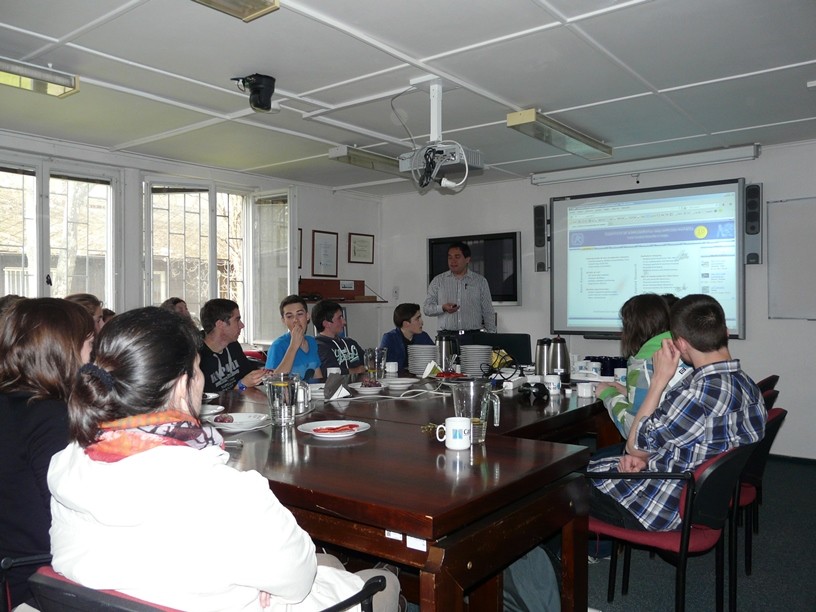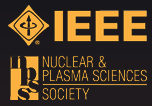Publikace
> Články v impaktovaných časopisech
> 'Direct Observation of Decay of Radioactive Nuclei with Spatial
and Time Coincidence Technique'
Direct Observation of Decay of Radioactive Nuclei with Spatial
and Time Coincidence Technique
Autor
| Jakůbek Jan, Ing. Ph.D. | UTEF |
| Platkevič Michal, Ing. | UTEF |
| Granja Carlos, Doc. Ing. Ph.D. | UTEF |
| Koester Ulli | ILL Grenoble |
| Pospíšil Stanislav, Ing. DrSc. | UTEF |
Rok
2011
Časopis
Nucl. Instr. Methods A 633 (2011) S203-S205
Web
Obsah
The position, energy and time sensitivity of the Timepix detector can be exploited for detection and spectroscopy of
radioactive ions and their decay. The USB readout interface used for detector control and data acquisition can be adapted to
receive an external clock and trigger from other detecting devices such as ionization chambers, scintillation and
semiconductor detectors. Timepix can be thus used to (i) selectively detect chosen ions from a multiple-component ion beam,
and (ii) record their subsequent decay. The high granularity of the pixel detector allows to apply not only temporal but also
spatial coincidence technique for background suppression. This is particularly important for scarcely populated nuclei. Results
are demonstrated by the measurement of 8He and 6He ions decay products and decay half-lives. Experiments were done on
short-lived nuclei using radioactive ion beams of the Lohengrin fission fragment mass separator at the ILL Grenoble.
Granty
Projekty
Příklad citace článku:
J. Jakůbek, M. Platkevič, C. Granja, U. Koester, S. Pospíšil, "Direct Observation of Decay of Radioactive Nuclei with Spatial
and Time Coincidence Technique", Nucl. Instr. Methods A 633 (2011) S203-S205 (2011)
Hledat
Události
21.-22. 11. 2014
Seattle, USA
8-15 Nov 2014
Surrey, Velká Británie
8. září 2014
9. září 2014
24. 4. 2014
3. 4. 2014
Seoul, Korea
27 Oct - 2 Nov 2013
Paris
23-27 June 2013
Anaheim, USA
29 Oct - 3 Nov 2012






 Experimental physics
with polarized protons, neutrons and deuterons
Experimental physics
with polarized protons, neutrons and deuterons Progresivní detekční metody ve výuce subatomové a částicové fyziky
na ZŠ a SŠ
Progresivní detekční metody ve výuce subatomové a částicové fyziky
na ZŠ a SŠ NSS MIC IEEE Conference
NSS MIC IEEE Conference Konference SEPnet, CERN@school
Konference SEPnet, CERN@school Lovci záhad - spolupráce ČT a ÚTEF
Lovci záhad - spolupráce ČT a ÚTEF Progresivní detekční metody ve výuce subatomové a částicové fyziky na ZŠ a SŠ
Progresivní detekční metody ve výuce subatomové a částicové fyziky na ZŠ a SŠ Návštěva v rámci projektu „Listening to the universe by detection cosmic rays“
Návštěva v rámci projektu „Listening to the universe by detection cosmic rays“ NSS MIC IEEE Conference
NSS MIC IEEE Conference 15thIWORID
15thIWORID NSS MIC IEEE Conference
NSS MIC IEEE Conference